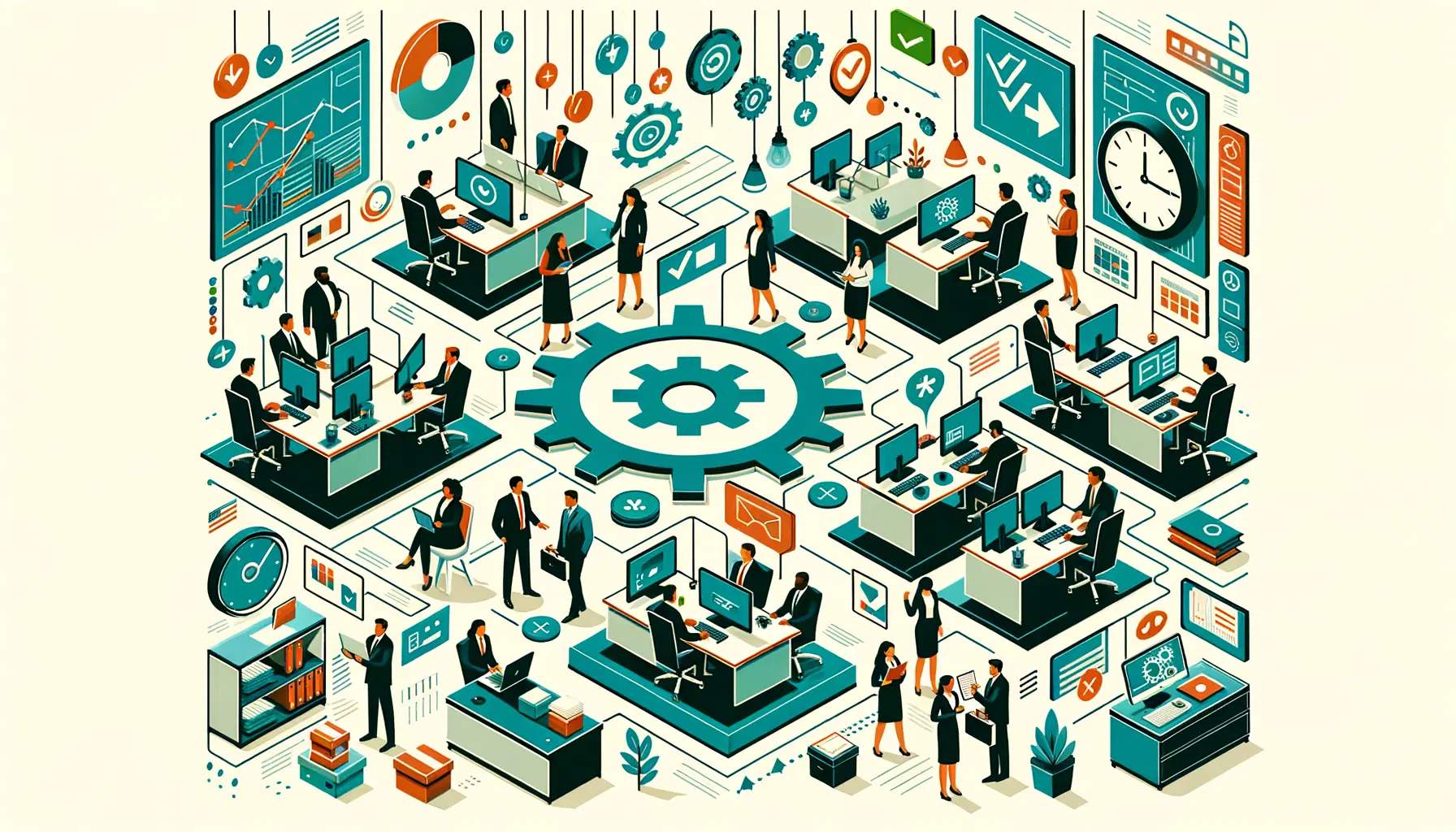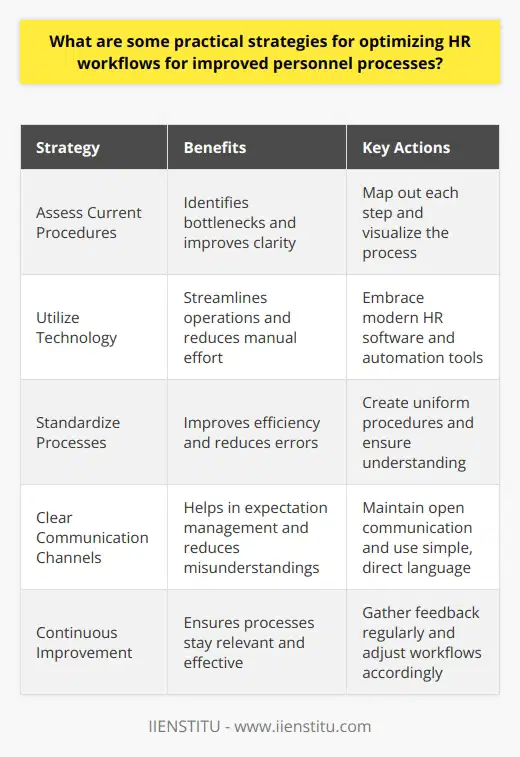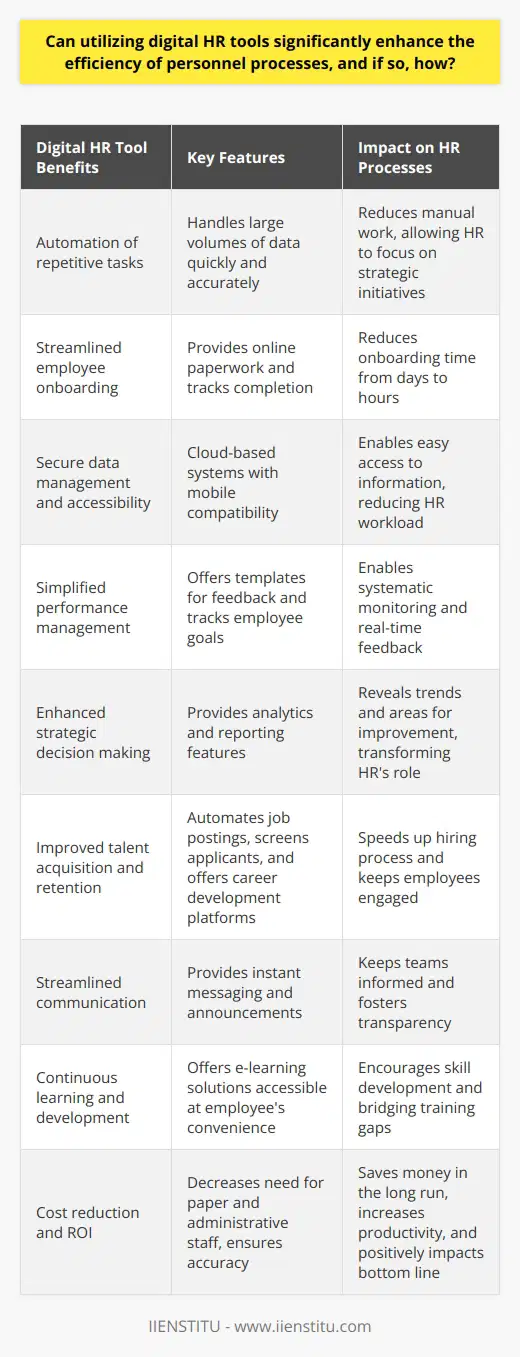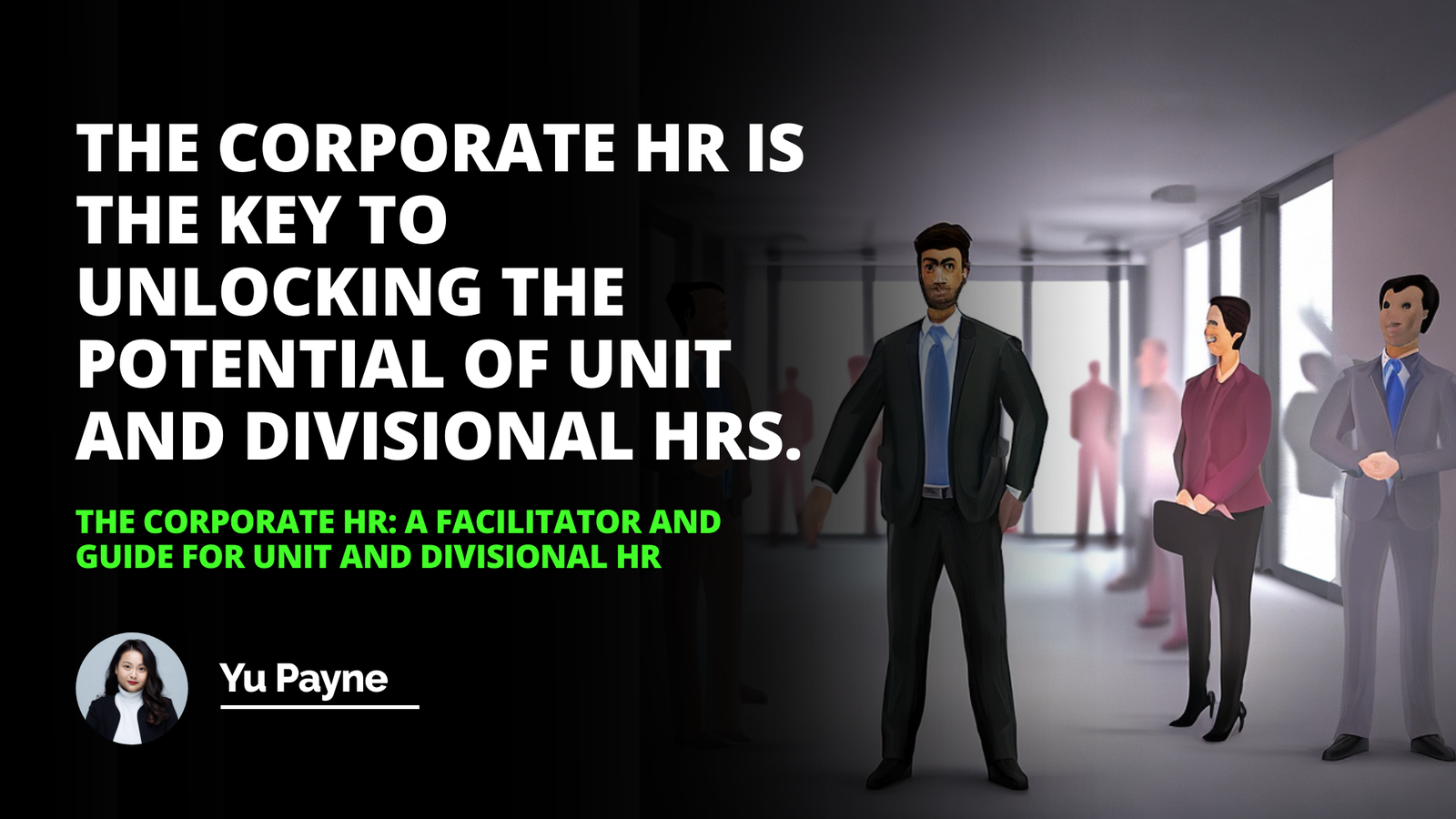
In an increasingly complex and fast-paced business environment, streamlining personnel processes for improved efficiency is not just beneficial, it is essential. Human Resources (HR) departments, serving as the nexus between an organization and its employees, find themselves in need of robust mechanisms to manage the plethora of tasks efficiently. HR workflows play a pivotal role in this dynamic, promising an organized and systematic approach to handling employee-related procedures.
As HR continues to evolve from its traditional administrative roots to a strategic entity within the business, the implementation of effective HR workflows becomes necessary. This blog post delves into the essence of HR workflows, their undeniable benefits, and the automation tools transforming them, along with real-life examples that offer insights into their practical application.
Introduction to HR Workflows
Definition of HR Workflows
HR workflows are the predefined paths that documents, information, and tasks traverse within an HR department to reach resolution or completion. These structured sequences of activities enable consistent adherence to policies and procedures, reducing variability in execution and increasing the effectiveness of HR operations.
The concept of HR workflows is organized around the idea of a 'flow'—the streamline of processes sans unnecessary interruptions or delays.
Importance of HR Workflows in the Modern Business Landscape
In the current business paradigm, agility and efficiency are more than operational buzzwords; they are the cornerstones of competitive advantage. HR workflows are fundamental in carving out this advantage as they empower organizations to respond quickly to changing demands, scale operations, and ensure that all HR functions occur with both timely precision and compliance with legal frameworks.
Moreover, as HR departments become increasingly strategic, streamlined workflows facilitate this evolution by liberating time and resources, thereby allowing focus on growth and innovation.
Overview of Blog Content
HR Service Delivery: Optimizing Workforce Value in Modern Businesses
HR Risk Management: Strategies for Optimal Employee Performance
In this blog, we aim to unwrap the intricacies of HR workflows, discussing their basic structures, the challenges faced in implementing them, and the substantial improvements they can achieve within HR functions. We will examine the overhaul from manual to automated systems and highlight real-world applications that underline the vital nature of these transformative processes.
Understanding the Basics of HR Workflows
Detailed Explanation of What HR Workflows Are
At their core, HR workflows are a set of ordered tasks, connected by logical sequences, with the aim of completing a specific HR process. These workflows can cover a variety of functions, from onboarding new employees and managing leave requests to handling performance evaluations and overseeing offboarding procedures. Each workflow is crafted meticulously to ensure that every step is accounted for and that intersecting tasks from different HR disciplines are harmonized.
The Role of HR Workflows in Firms
HR workflows are pivotal in leveraging the full potential of HR professionals by allowing them to concentrate on strategic imperatives rather than getting ensnared in administrative quicksand. These structured flows of tasks mitigate risks of error, uphold compliance, and enhance the experience for employees and managers alike.
By guiding user actions and decision points within set parameters, HR workflows uphold organizational integrity and governance.
The Components That Make Up HR Workflows
An efficient HR workflow is comprised of actors (the individuals responsible for tasks), tasks (the actions to be executed), data inputs (necessary information to process tasks), and decision nodes (points at which the workflow could branch based on the information processed). These components, when precisely orchestrated, create a coherent and transparent system that elevates the efficiency and accountability of HR practices.
Benefits of HR Workflows
Discussion on How HR Workflows Streamline Processes
HR workflows dismantlе the barriers of inefficiency by creating a linear and logical progression of tasks. A well-implemented HR workflow ensures that all stakeholders are aware of their roles and responsibilities, reducing redundancies and creating a clear line of accountability. This smoothing out of kinks in the processes not only accelerates task completion but also simplifies monitoring and managing HR activities.
Explanation of How HR Workflows Reduce Administrative Burden
The reduction of the administrative burden is one of the crystal-clear benefits of implementing HR workflows. By automating routine tasks and empowering employees through self-service portals for standard requests, the workload on HR staff is significantly diminished. This allows the department to shift focus toward more value-adding activities like talent development and employee engagement strategies.
Review of the Role of HR Workflows in Ensuring Regulatory Compliance
Regulatory compliance is an ever-looming challenge for HR departments. HR workflows support compliance by building controls and checks into each step of the process. They ensure the right processes are followed and the correct documentation is captured, thereby safeguarding against potential legal issues. Moreover, digital records ease the audit trails for compliance reporting.
Challenges in HR Workflow Management
Discussion on Common Difficulties in Managing HR Workflows
Managing HR workflows is not without its challenges. These range from ensuring user adoption of new systems, managing change, to integrating workflows across disparate HR technologies. Customizing workflows to meet the specific nuances of a business while keeping them flexible enough to adapt to change can be particularly taxing.
Importance of Addressing These Challenges
Ignoring the complexities in managing HR workflows can result in detrimental impacts on an organization's efficiency and its ability to stay competitive. Challenges need to be systematically addressed to unlock the full potential of workflow optimization and ensure sustainable success in HR operations.
Implementing Effective HR Workflows
HR departments endeavoring to implement effective HR workflows must undertake a measured and strategic approach. This typically begins with a comprehensive analysis of existing processes, identifying bottlenecks and areas of inefficiency. Stakeholder input is crucial during this phase to gain insights on the practical aspects of workflow optimization.
Necessary Steps in Setting Up Effective HR Workflows
Once weak points are identified, the next step is to design workflows that not only address these weaknesses but also align with the company's overarching goals. This involves mapping out every stage of the workflow, delineating responsibilities, and setting timelines for task completion. A communication strategy is then employed to educate all parties involved about the new processes and protocols.
Insights on the Technology That Can Aid in Workflow Management
Technology plays a crucial role in HR workflow management. Modern HR Information Systems (HRIS) comprise workflow automation features that can trigger actions, send notifications, and create tasks based on pre-defined rules. The use of cloud-based platforms facilitates real-time updates and accessibility, enhancing collaboration and reducing latency in HR operations.
HR Workflow Automation
Role of Automation in HR Workflows
Automation is a game-changer in HR workflows, offering unprecedented levels of efficiency and accuracy. By automating mundane tasks, data entry, and document management, HR professionals can reallocate their time to strategic initiatives that propel the business forward. Automation also reduces human error and ensures consistency in the application of HR policies.
Benefits of Automating HR Workflows
The benefits of automating HR workflows are manifold. Automated reminders keep processes on schedule, the digital handling of data lessens paper usage and storage needs, and integrated systems facilitate a seamless flow of information. Additionally, employee satisfaction often increases as a result of faster response times and the simplification of previously convoluted procedures.
Tools and Systems Used in Automation
In the realm of HR workflow automation, a variety of tools and systems stand at the ready to assist. Comprehensive HRIS suites provide a one-stop-shop for all HR workflow needs, whereas specialized software, such as online courses with certificates for HR training, support continuous learning and professional development. Integration tools and APIs are crucial for creating a cohesive technology ecosystem that supports automated HR workflows.
Real-life Examples of HR Workflows
The practicality of HR workflows is best demonstrated through real-life applications. Companies that have integrated sophisticated HR workflows report not only time savings and cost reductions but also enhanced employee experiences and company culture. By examining specific cases of successful HR workflow implementation, valuable insights can be drawn.
Objective and Subjective Look at Examples Where HR Workflows Have Been Successfully Applied
For instance, a multinational corporation implemented an automated onboarding process, significantly reducing the time required for new hires to become productive. This involved a step-by-step workflow that managed everything from workspace setup to mandatory hr certification training. The integration of an e-signature platform expedited contract signing, while automated reminders ensured all parties completed their tasks in a timely manner.
Analysis of the Strategies Used in These Examples
The success of such an implementation lies in meticulous planning, stakeholder engagement, and continuous monitoring and adjustment of the workflow. The flexibility to adapt to specific requirements of different regions or departments was essential in overcoming initial resistance and proving the workflow's effectiveness across the organization.
Lessons That Can Be Learned from These Real-life Case Studies
These case studies illustrate the transformative power of well-designed HR workflows. They emphasize the need for organizational resolve in addressing inefficiencies, the intelligent employment of technology, and the cultivation of a culture that embraces innovation and change. Ultimately, businesses that master these elements can realize the full promise of efficient and effective HR workflow management.
The Future of HR Workflows
Reflexion on the Importance of HR Workflows in Business Growth
The intricate link between HR workflow optimization and business growth cannot be overstated. Efficient HR workflows create a foundation that supports strategic HR initiatives, attracting and retaining talent, and fostering a productive workplace environment. Their role will only grow more pivotal as businesses continue to navigate the volatile waters of the modern economy.
Projection on Future Trends in HR Workflow Management
Looking ahead, HR workflow management is set to become more intelligent, predictive, and personalized. Advancements in artificial intelligence and machine learning will drive sophisticated analytics, offering insights that can further fine-tune workflows. The increased adoption of online courses with certificates and digital badges will drive HR departments to automate and integrate professional development into their workflows.
Final Thoughts on Adapting to These Changes and Advancements
As businesses prepare for these future shifts, adaptability will be key. Embracing new technologies, fostering a culture of continuous improvement, and seeking out hr certification programs that keep HR professionals ahead of the curve will be essential strategies. Organizational agility, empowered by refined HR workflows, will act as the bedrock for sustainable success in the challenging times ahead.
Frequently Asked Questions
How does streamlining HR workflows contribute to overall organizational efficiency?
Streamlining HR Workflows Enhances Organizational Efficiency
Human Resources (HR) functions as the backbone of any organization. It handles recruitment, onboarding, employee development, and more. A streamlined HR workflow can markedly boost organizational efficiency.
Simplified Processes Save Time
Efficient workflows use minimal steps. They save time. Time equates to productivity in the business context. Simplified HR processes leave more time. Employees then focus on strategic tasks.
Automation Minimizes Errors
Automation plays a crucial role here. Manual tasks are prone to errors. Automated HR systems reduce these errors. They ensure accuracy in record-keeping and data analysis. Less errors mean fewer corrections, contributing to faster operations.
Consistent Standards Improve Quality
Consistency also matters. Streamlined workflows use consistent standards. They improve the quality of work. Everyone understands what to do. Consistency avoids confusion. This leads to better performance.
Better Decision Making Through Data
Data drives decisions. Streamlined HR processes collect data efficiently. Managers access real-time insights. They make informed decisions. Informed decisions often lead to better outcomes.
Enhanced Employee Experience
Employees prefer easy processes. Streamlined HR workflows deliver this. They make tasks like submitting leave or updating personal details less hassle. This results in a happier workforce.
Optimized Resource Allocation
Efficient HR workflow means optimized resource allocation. The HR team spends less time on repetitive tasks. It saves resources. Resources include time, money, and energy.
- Time: Hours saved on manual labor.
- Money: Lower costs from less overtime and error handling.
- Energy: Employees use their energy on meaningful work.
Increased Scalability
Organizations grow. Their systems must grow with them. Streamlined workflows are scalable. They adapt to increasing workloads. They accommodate more employees. They handle more complex operations.
In conclusion, streamlining HR workflows benefits the entire organization. It saves time. It cuts down on errors. It enforces quality. It empowers decision making. It enhances employee satisfaction. It allocates resources optimally. It accommodates growth. All these factors contribute to a more efficient and effective organization.

What are some practical strategies for optimizing HR workflows for improved personnel processes?
Practical Strategies for HR Workflow Optimization
Assess Current Procedures
Understanding existing HR processes matters. Identify bottlenecks first. Map out each step. This visualization aids clarity.
Utilize Technology
Embrace modern HR software. Tools like HRIS streamline operations. Automation is key. It reduces manual effort significantly. Automated reminders and notifications keep tasks on track.
Standardize Processes
Create uniform procedures. Consistency improves efficiency. It reduces errors as well. Ensure that everyone understands them.
Clear Communication Channels
Maintain open communication. It helps in expectation management. Frequent updates reduce misunderstandings. Use simple, direct language.
Simplify Documentation
Minimize paperwork where possible. Digitize records for accessibility. Keep forms straightforward. Complex documents deter prompt completion.
Train Employees Thoroughly
Provide comprehensive training. Informed employees complete processes faster. They make fewer mistakes. Offer regular refresher courses.
Prioritize Tasks
Identify critical HR activities. Tackle these first. Understand that not all tasks have equal importance.
Delegate Effectively
Share responsibilities suitably. Understand team members’ strengths. Assign tasks accordingly.
Continuous Improvement
Gather feedback regularly. Learn from staff experiences. Adjust workflows based on feedback. This ensures processes stay relevant.
Measure Performance
Set clear metrics. They should reflect HR goals. Regularly review these metrics. Adjust strategies accordingly.
Foster a Supportive Culture
Encourage a culture of improvement. Reward efficient workflow management. Recognize individuals who adapt and enhance processes.
In conclusion, streamlining HR workflows revolves around evaluation, adopting technology, standardizing, communication, and continuous improvement. When executed correctly, these strategies lead to more effective personnel processes and overall organizational agility.

Can utilizing digital HR tools significantly enhance the efficiency of personnel processes, and if so, how?
Digital HR tools can greatly improve efficiency. They automate repetitive tasks. This reduces the need for manual work. It allows HR professionals to focus on strategic initiatives. These initiatives contribute to overall business success.
The Power of Automation
Automation stands at the forefront of efficiency. HR tasks often include data entry and processing. These are time-consuming when done manually. Digital tools leverage automation. They handle large volumes of data quickly. They ensure accuracy and consistency. This reduces the chances of human error.
Seamless Employee Onboarding
Consider the onboarding process. Digital tools streamline it. They provide new hires with necessary paperwork online. They track the completion of these documents. Tasks that once took days now take hours.
Data Management and Accessibility
Digital HR tools store information securely. The cloud-based systems offer easy access. Employees can retrieve their own data. This reduces the HR workload. Access from anywhere becomes possible. Mobile compatibility is a key feature. This ensures employees can use the system even on-the-go.
Simplifying Performance Management
Performance reviews are essential HR activities. These tools simplify the process. They offer templates for feedback. They track employee goals and achievements. Monitoring performance becomes more systematic. Real-time feedback is now possible.
Strategic Decision Making
HR tools help in making informed decisions. They provide analytics and reporting features. These insights reveal trends. They identify areas for improvement. Robust data analysis can transform HR's role. It becomes more strategic rather than administrative.
Talent Acquisition and Retention
Recruitment requires significant effort. Digital tools can assist. They automate job postings. They screen applicants. This speeds up the hiring process. They also enhance the candidate experience. Retaining talent also benefits. Digital solutions offer career development platforms. Employees stay engaged. They see clear career paths within the organization.
Streamlined Communication
Efficient communication is key in any organization. Digital platforms provide instant messaging and announcements. This keeps teams informed. Information delivery is quick and effective. This fosters a culture of transparency.
Bridging the Training Gap
Employee development is critical. Digital tools offer e-learning solutions. Staff can access training modules at their convenience. This encourages continuous learning and development.
Cost Reduction and ROI
Investing in digital HR tools requires upfront costs. However, they save money in the long run. They decrease the need for paper. They reduce administrative staffing needs. They avoid compliance penalties by ensuring accuracy. Organizations notice a return on investment. Productivity increases. This directly impacts the bottom line.
In conclusion, digital HR tools can revolutionize personnel processes. They simplify, accelerate, and improve HR tasks. They shift the focus towards strategic growth. They ensure a more engaged and satisfied workforce. Embracing digital HR tools is a step towards future-proofing an organization. The benefits are clear. They far outweigh the costs and effort of implementation.



